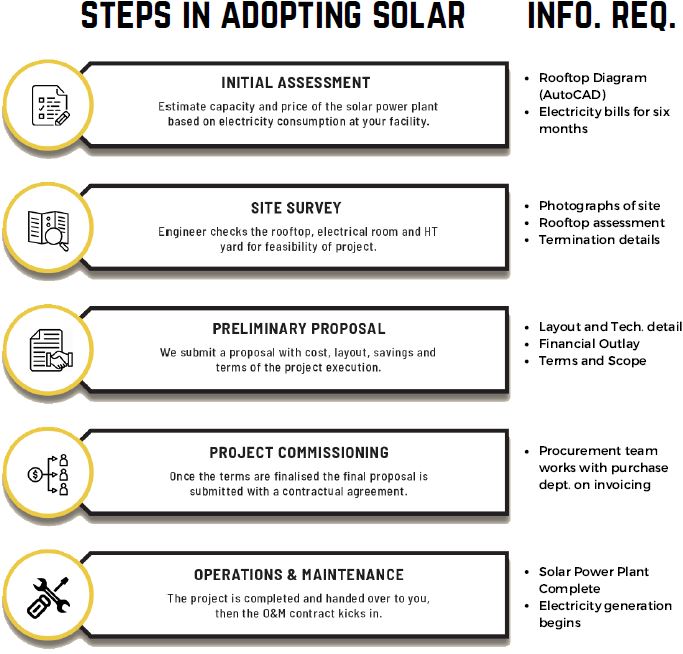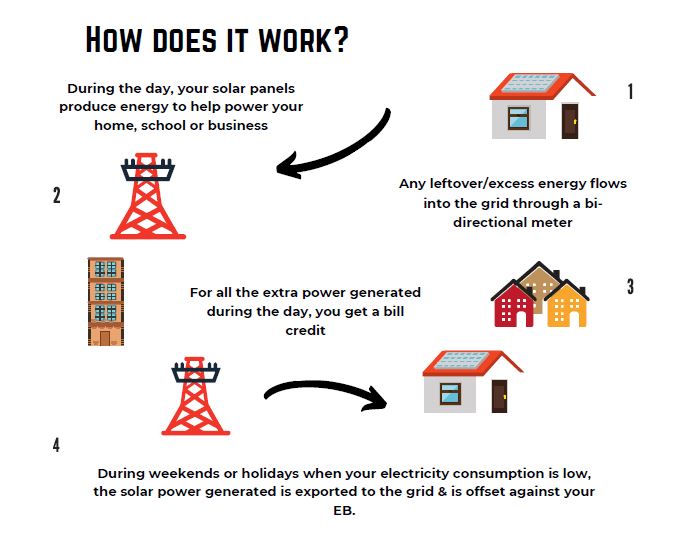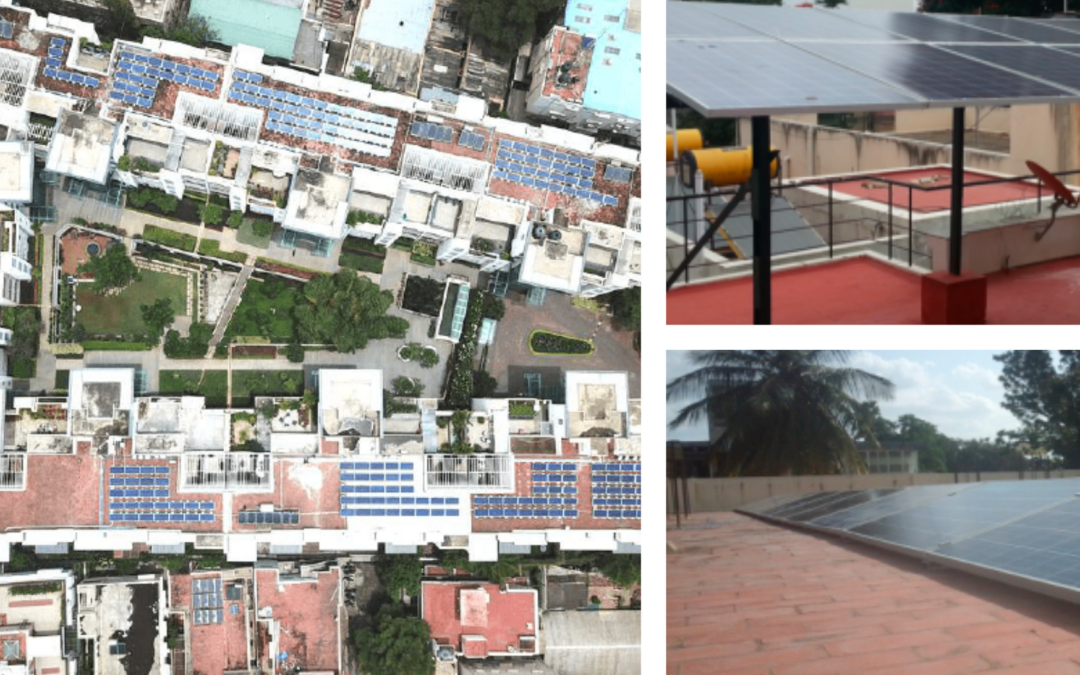Solar panels are the best renewable option available to generate electricity are cost-effective and environmentally friendly. The awareness of adopting solar for apartments and homes has been increasing in many communities. Today, most of the communities are adopting solar power to run the building’s common area through solar power. Not only apartment complexes but also individual homeowners are going solar and running their entire home with solar energy. Going solar helps in reducing carbon footprints and builds towards a greener future.
What are the benefits of choosing solar?
- Solar energy is free and abundantly available.
- Solar panels are installed on the roof of the building, so unused terrace spaces can be used to generate clean energy.
- Solar panels bring down the cost of electricity bills and may even generate money when they produce excess power which can be sold to electricity companies.
- Solar panels are long-lasting and require hardly any maintenance.
How to check if solar is a good fit for your apartment or home?
- If you plan to go for solar, do some initial research on market prices and installers available for solar panels and their components.
- Get in touch with installers and get an estimation of the capacity that can be installed on your roof space. Installers will help estimate the cost of setting up solar panels and the energy generated annually.
- Always ask for some information like the installer’s previous solar installations made. Enquire the installers about previous solar installations they have made that are like your household/apartment complex.
- Remember, do not get in touch with many installers as the process followed by each installer company may be different and that may cause a lot of confusion.
- Always remember the purpose of your installation of a solar plant and see if your goal is achieved by choosing the right vendor.

What are net metering and its benefits?
Net metering is a solar incentive that allows you to store energy in the electric grid. When your solar panels produce more electricity than you need, that energy is sent to the grid in exchange for credits. Then, at night or other times when your solar panels are under production, you pull energy from the grid and use these credits to offset the costs of that energy.
- Net metering helps in reducing the electricity bill as the extra energy produced is exported to the grid and used when it is required.
- Without net metering, you will be billed for your consumption.
- The net metering policy makes solar energy more affordable for users.
- Saves on expensive batteries.
- Net metering helps in capturing your data. It shows energy generated and energy consumed.

What are the things that are to be considered while adopting a solar plant?
- Understanding the solar policy of your states is very important, as each state has a different solar policy.
- The next important thing would be to understand what type of solar system the right fit for you would be. The type of solar system your site requires can be identified through understanding your consumption of energy and the connectivity to the grid.
- The most important step would be to choose quality solar modules that are cost-effective and have a great warranty and energy generation. Installers will help you find the right solar modules for your apartment/house.
- Always remember to check and understand the saving potential with the industrial solar system.
What is the process of obtaining net metering?
The first important document needed to obtain net metering is the electricity bill of the building. The EB is to be submitted to Descom to obtain the net metering facility, all the processes are done online. These are the following steps to obtain net metering.
Step 1: The Applicant shall submit an online application to the Sub-Divisional Officer (SDO).
Step 2: If the Application is technically feasible (fully/ partially): The SDO shall issue the Intimation letter to the Applicant for Execution of the Power Purchase Agreement (PPA). In case, if the Application is not feasible, SDO shall cancel the Application and intimate the same to the Applicant. These 2 steps will take around 3 to 5 days from the date of registration of application.
Step 3: The Applicant shall submit the PPA to SDO for execution. This will take 7 days from the Date of Intimation letter issued by SDO.
Step 4: The SDO shall execute the PPA and issue an Approval letter for the start of SRTPV (Solar Rooftop Photovoltaic) work. If the Applicant fails to submit the PPA within 7 days from the date of intimation letter, the SDO shall cancel the Application and intimate the same to the Applicant. This will be done in 2 days from the date of submission of the PPA.
Step 5: The consumer portion of work must be completed, and the work completion report must be submitted within 5 months from the date of the Approval letter for the start of SRTPV work. The timeline for this will be 1 month prior to the last date of completion of the project.
Step 6: This is the final step, the SDO shall commission and synchronise the SRTPV Plant within 15 days from the date of submission of the work completion report by the Applicant after ensuring that the SRTPV applicant has attended all the observations made by SDO/MT staff if any. A synchronization Certificate shall be issued by SDO. The timeline for this will be 7 days prior to the last date of completion of the project.
__________________________
If you are looking to adopt solar, please feel free to get in touch with us. We believe in partnering with our clients on their sustainability journey.
Email us at info@usolar.in
WhatsApp us at +916366226970 | https://wa.me/916366236970

